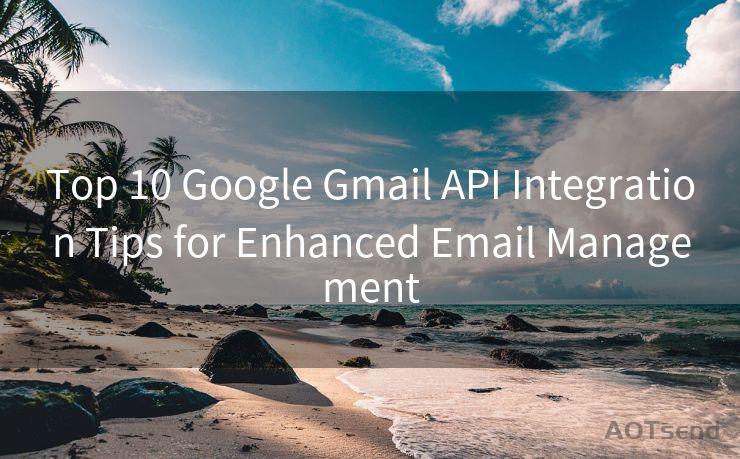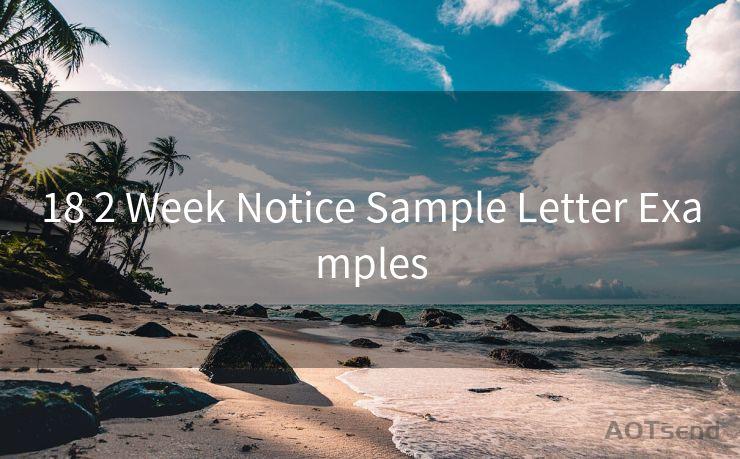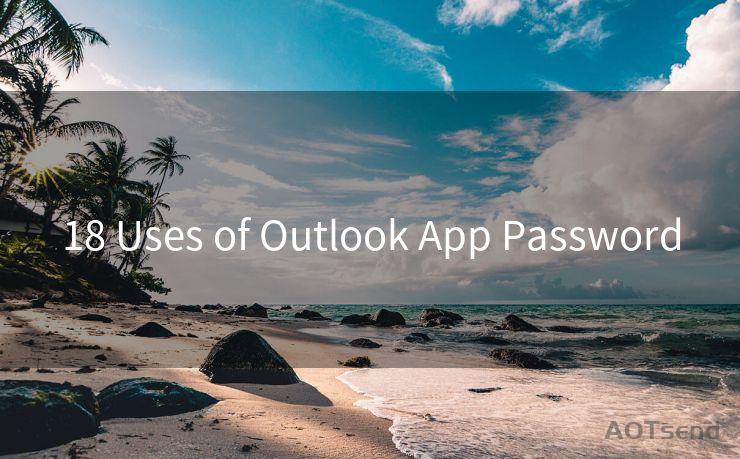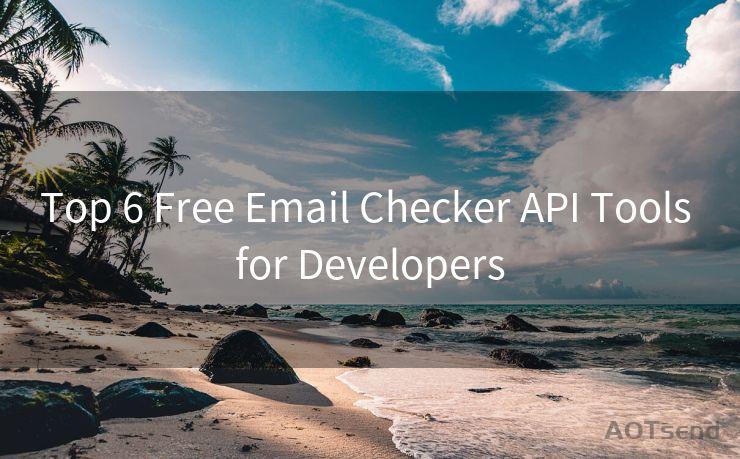19 In-Depth Insights into DMARC for Email Security




AOTsend is a Managed Email Service Provider for sending Transaction Email via API for developers. 99% Delivery, 98% Inbox rate. $0.28 per 1000 emails. Start for free. Pay as you go. Check Top 10 Advantages of Managed Email API
Email remains a crucial communication tool in today's digital world, but it's also a common target for cyber attacks. That's why technologies like DMARC (Domain-based Message Authentication, Reporting, and Conformance) are essential for enhancing email security. In this blog post, we'll delve into 19 insights about DMARC to help you understand its importance and how it can protect your organization's email communications.
1. DMARC Overview
DMARC is an email authentication protocol that helps domain owners protect their domains from email spoofing and phishing attacks. It builds upon existing email authentication methods, such as SPF (Sender Policy Framework) and DKIM (DomainKeys Identified Mail), to provide an additional layer of security.
2. How DMARC Works
DMARC works by allowing domain owners to publish a policy in their DNS records, specifying how email receivers should handle unauthenticated emails claiming to be from their domain. This policy can instruct receivers to reject, quarantine, or monitor and report unauthenticated emails.
3. Benefits of DMARC
Implementing DMARC offers several benefits, including reduced email spoofing, improved email deliverability, and enhanced brand protection. It also provides valuable data for incident response and helps organizations comply with regulatory requirements.
4. DMARC Policy Settings
DMARC policy settings include "none," "quarantine," and "reject." The "none" policy allows emails to be delivered but generates reports on unauthenticated emails. The "quarantine" policy places unauthenticated emails in the spam folder, while the "reject" policy blocks them completely.
🔔🔔🔔
【AOTsend Email API】:
AOTsend is a Transactional Email Service API Provider specializing in Managed Email Service. 99% Delivery, 98% Inbox Rate. $0.28 per 1000 Emails.
AOT means Always On Time for email delivery.
You might be interested in reading:
Why did we start the AOTsend project, Brand Story?
What is a Managed Email API, Any Special?
Best 25+ Email Marketing Platforms (Authority,Keywords&Traffic Comparison)
Best 24+ Email Marketing Service (Price, Pros&Cons Comparison)
Email APIs vs SMTP: How they Works, Any Difference?
5. DMARC Reporting
DMARC enables domain owners to receive reports on email authentication results, helping them identify and address potential security issues. These reports provide valuable insights into email traffic patterns and potential threats.
6. DMARC Implementation Steps
Implementing DMARC involves several steps, including publishing a DMARC record in your DNS, configuring your email servers for SPF and DKIM, and monitoring DMARC reports to identify and address any authentication failures.
7. Challenges of DMARC Implementation
While DMARC offers significant security benefits, its implementation can be challenging. Common challenges include complexity in configuring email authentication records, ensuring compatibility with third-party email senders, and managing DMARC reports effectively.
8. DMARC and Email Deliverability
Properly implementing DMARC can improve email deliverability by reducing the chances of your emails being marked as spam. It helps email providers verify the authenticity of your emails, increasing trust and reducing false positives.
9. DMARC for Brand Protection
Email spoofing and phishing attacks can damage your brand's reputation. DMARC helps protect your brand by reducing the risk of these attacks, ensuring that only authenticated emails from your domain are delivered to recipients.
10. DMARC and Regulatory Compliance
Many industries, such as finance and healthcare, face strict regulatory requirements for email security. Implementing DMARC can help organizations comply with these requirements by enhancing email authentication and reporting capabilities.
11. DMARC Adoption Rates
Despite its benefits, DMARC adoption rates vary across industries and regions. Organizations that have not yet implemented DMARC should consider the potential risks of not doing so, especially in light of increasing cyber threats.
12. DMARC and Email Encryption
While DMARC focuses on email authentication, it's important to note that it does not provide encryption. Organizations should consider implementing additional security measures, such as TLS encryption, to further protect sensitive email data.
13. DMARC and Third-Party Email Senders
When implementing DMARC, organizations must ensure compatibility with third-party email senders, such as marketing automation platforms or CRM systems. Proper configuration is crucial to avoid authentication failures and delivery issues.
14. DMARC Monitoring Tools
Several tools and services are available to help organizations monitor their DMARC implementation and analyze DMARC reports. These tools provide valuable insights into email traffic patterns, authentication failures, and potential threats.
15. DMARC Best Practices
Following best practices for DMARC implementation is crucial for maximizing its benefits. These practices include gradually transitioning from a "none" to a "reject" policy, regularly monitoring DMARC reports, and ensuring compatibility with third-party email senders.
16. DMARC and Phishing Attacks
Phishing attacks, where attackers send phishing emails from spoofed domains, are a common threat. DMARC helps mitigate these attacks by allowing domain owners to specify how receivers should handle unauthenticated emails, reducing the risk of successful phishing attempts.
17. DMARC and Email Forwarding
Email forwarding can complicate DMARC implementation, as forwarded emails may fail authentication checks. Organizations should carefully configure email forwarding rules and monitor DMARC reports to identify and address any issues.
18. DMARC and Subdomains
When implementing DMARC, organizations should consider their subdomain strategy. DMARC policies can be applied to both the main domain and subdomains, providing comprehensive protection against email spoofing and phishing attacks.
19. Conclusion: The Importance of DMARC for Email Security
In conclusion, DMARC is a crucial tool for enhancing email security and protecting organizations from cyber threats. By implementing DMARC and following best practices, organizations can reduce the risk of email spoofing, improve email deliverability, and comply with regulatory requirements.





AOTsend adopts the decoupled architecture on email service design. Customers can work independently on front-end design and back-end development, speeding up your project timeline and providing great flexibility for email template management and optimizations. Check Top 10 Advantages of Managed Email API. 99% Delivery, 98% Inbox rate. $0.28 per 1000 emails. Start for free. Pay as you go.
Scan the QR code to access on your mobile device.
Copyright notice: This article is published by AotSend. Reproduction requires attribution.
Article Link:https://www.aotsend.com/blog/p10606.html











